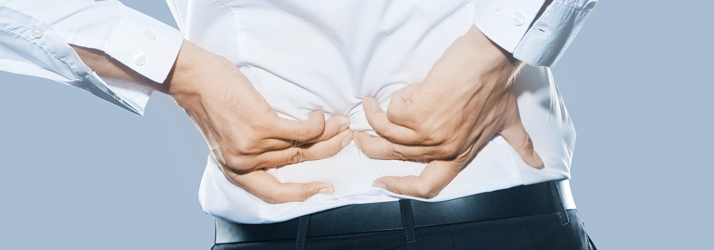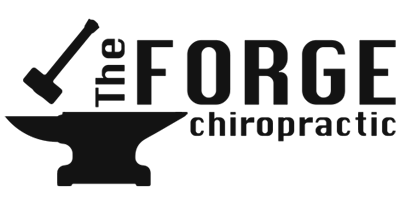Understanding and Managing General Back Pain: Sprains, Strains, and More in Baldwin WI

Low back pain is one of the most common health complaints, and almost everyone will experience it at some point. Often, this pain stems from injuries to the hardworking muscles and ligaments that support your lumbar spine (your lower back). These are commonly known as "musculoligamentous injuries," or more simply, sprains and strains.
Your lumbar spine is designed to handle tremendous loads, but sometimes the stress can be too much. The L4-L5 and L5-S1 segments (the lowest two levels of your lumbar spine) experience the greatest range of motion combined with the highest loads, making them particularly susceptible to injury. At our chiropractic clinic in Baldwin WI we're here to help you understand your back pain and find effective solutions.
What are Low Back Sprains and Strains in Baldwin WI?
- Ligament Sprains: Your spinal ligaments are strong bands of tissue that act as "static stabilizers," connecting bones and limiting excessive movement at the end of your range of motion. When forces push your spine beyond its normal limits, these ligaments (including those within the disc itself, and others that run along and between your vertebrae) can be stretched or torn. The ligaments at the back of your spine are most commonly affected.
- Muscle Strains: Your muscles are "dynamic stabilizers," providing stability and control to your low back throughout its movements. A muscle strain, or "pulled muscle," often happens when a muscle is forcefully contracted against a strong or unexpected resistance (an eccentric contraction) or during a very sudden or violent muscular effort. This can damage muscle fibers, especially in the longer muscles that span several spinal joints.
While it can be difficult to tell a sprain from a strain, and they often occur together, the good news is that the approach to managing them is very similar.
How Do These Common Back Injuries Occur?
Low back sprains and strains can happen in two main ways:
- Acute Injuries (Sudden Onset):
- These often result from a single, forceful event, such as a fall, a sudden twist, lifting a heavy object improperly, a forceful push or pull, a direct blow to the back, or even abruptly straightening up after being seated or crouched for a long time.
- Acute strains are responsible for about 60% of athletic injuries involving the low back, with football and gymnastics participants having higher rates. These injuries are particularly likely during movements that combine bending with twisting or side-bending.
- Cumulative Overload (Gradual Onset from Repetitive Stress):
- More often, back pain develops gradually due to stressors applied over an extended period. This can lead to muscle fatigue, inflammation, and tiny tears in the muscle or ligament fibers.
- Common sources of this cumulative stress include:
- Prolonged Static Postures: Sitting or standing for long periods without breaks or movement.
- Poor Workstation Ergonomics: An improperly set-up desk or workspace.
- Repetitive Movements: Bending, twisting, or lifting done repeatedly, even with light loads.
- Incentive lifting strategies.
- Sedentary Lifestyles & Poor Conditioning: Weak supporting muscles are more easily overwhelmed.
- Pregnancy & Obesity: Increased load on the lumbar spine.
- The Impact of Sitting: Prolonged sitting, especially when slumping forward or backward, places significant stress on the lumbar spine. Sustained bending forward for even a few minutes can cause a temporary stretching of the ligaments (a phenomenon called "creep"), making them and the discs more vulnerable to injury from sudden movements for up to 30 minutes aerward.
- Morning Risk: Your ligaments and discs may be more susceptible to injury in the morning, as forces on them during bending movements can be significantly increased after a night's rest.
Factors That Can Increase Your Risk of Low Back Pain:
Beyond direct injury, several factors can make you more prone to developing low back pain:
- Muscular: poor communication between the core/low back (paraspinal) muscles, weak hip abductor (side hip) muscles, or tightness in hip flexors or hamstrings (sometimes called "lower crossed syndrome") can disrupt normal mechanics.
- Postural Habits: Sustained postures that flatten the natural inward curve (lordosis) of your low back can increase stress.
- Lifestyle Factors: Smoking (which can affect disc health), a history of previous back surgery.
- Pre-existing Structural Issues: Conditions like scoliosis (spinal curvature) or spondylolysis/spondylolisthesis (a defect or slippage of a vertebra).
- Psychological Factors: Depression, anxiety, lower education levels, post-traumatic stress, and fear-avoidant behaviors (avoiding activity due to fear of pain, which can lead to deconditioning) are also linked to a higher predisposition to low back pain.
How Common is This Type of Back Pain?
Most people will experience acute low back pain at some point, and for about 70% of them, it can be attributed to these sprain/strain type injuries. Females are affected slightly more frequently than males. While working during pregnancy isn't automatically linked to low back pain, women who work long hours (more than 8 hours a day) or lift heavy objects at work are more likely to experience pregnancy-related LBP. Back pain is also common across all age groups, with a surprisingly high prevalence even in adolescents, often attributed to factors like underdeveloped strength and coordination, poor posture, heavy backpacks, and rapid growth spurts.
The Forge Chiropractic Approach to General Back Pain
If you're dealing with general low back pain, an accurate diagnosis is key to effective treatment. At The Forge Chiropractic, we focus on identifying the specific tissues involved and the contributing factors to your pain:
- Detailed History: We'll start by listening to your story – how the pain began, what the pain feels like, what activities make it better or worse, your daily routines, any previous injuries, and your overall health.
- Comprehensive Physical Examination: This includes:
- Thorough assessment of your overall movement, including range of motion and how you perform common functional movements, to understand how your back is functioning and identify any limitations or painful activities.
- Specific orthopedic tests to help identify which ligaments, muscles, or joints might be affected.
- A neurological screening to rule out significant nerve involvement (like sciatica, which would involve a more specific diagnosis, though it can sometimes coexist).
- If indicated, we may utilize Jtech functional assessment tools to get objective data about your movement and strength.
- Whole-Person Healthcare Approach: We consider your entire lifestyle – ergonomics at work and home, activity levels, stress, sleep habits, and other factors that could be playing a role in your back pain.
- Personalized Treatment Goals & Strategies: We aim to not just relieve your pain but also to restore function and help prevent future episodes. Your personalized plan may include:
- Pain and Inflammation Relief: Utilizing therapies to calm irritated tissues.
- Restoring Spinal Mechanics: Gentle chiropractic adjustments and mobilizations to improve joint movement and reduce stress on affected tissues.
- Addressing Muscle Issues: So tissue therapies to relieve muscle tightness, spasms, and trigger points.
- Rehabilitative Exercises: Tailored exercises to improve the strength, flexibility, and endurance of the muscles that support your spine, helping to create better stability.
- Education and Advice: Guidance on proper body mechanics for daily activities and lifting, ergonomic advice for your workspace, and strategies to help you prevent re-injury and manage your spinal health proactively.
We focus on an active recovery approach, empowering you with the tools and knowledge to get back to doing what you love. If you're tired of living with general back pain, the team at The Forge Chiropractic in Baldwin, Wisconsin, is here to help.
OFFICE HOURS
Monday
12:00pm - 6:00pm
Tuesday
8:00am - 12:00pm
2:00pm - 6:00pm
Wednesday
8:00am - 12:00pm
2:00pm - 6:00pm
Thursday
8:00am - 12:00pm
2:00pm - 6:00pm
Friday
8:00am - 12:00pm
Saturday & Sunday
Closed
The Forge Chiropractic
900 Main St
Baldwin, WI 54002



